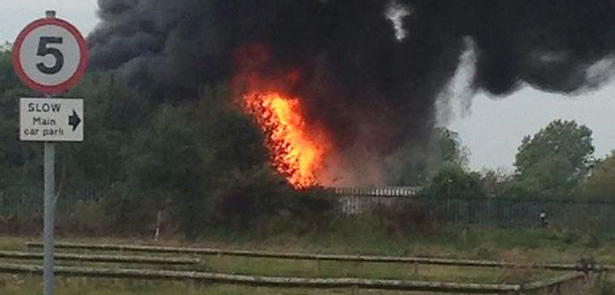On 28th September 2014 fire-fighters were called to a fire at a building site at Cargo Fleet Lane, Middlesbrough after reports that 20 large plastic sewerage pipes had deliberately been set alight. The blaze resulted in the streets surrounding the site having to be cordoned off after the area was blanketed in a cloud of noxious black smoke.
Similar incidents have been reported in America. One such example is where children playing in a 42” diameter storm culvert built a fire to keep warm; this then set light to the HDPE pipe which resulted in fire damage spreading for over 800’ along its length.
It is not just arson that pipe users need to be aware of, brush fires, vandalism, fuel spills and industrial accidents all have the potential to initiate fires in pipelines. As a result, designers, installers and asset owners should consider combustibility and the risk of fire when selecting pipe materials, gully tops and drain grates.
Plastic burns. If these pipelines had been constructed from a non-combustible material, such as precast concrete, it is unlikely that either of these fires would have occurred, simply because concrete does not burn.
Where a fire has occurred in a drainage pipeline a secondary consequence of a fire is the impact of the fire on the pipe itself. Fires in concrete pipes generally do not affect their structural strength, flow capacity or corrosion and abrasion resistance, whereas plastic pipes can melt and collapse.
All of which raises the question: is the use of drainage pipe materials other than concrete really worth the risk? Concrete has inherent strength and a proven service life of over 100 years … and it is non-combustible.








